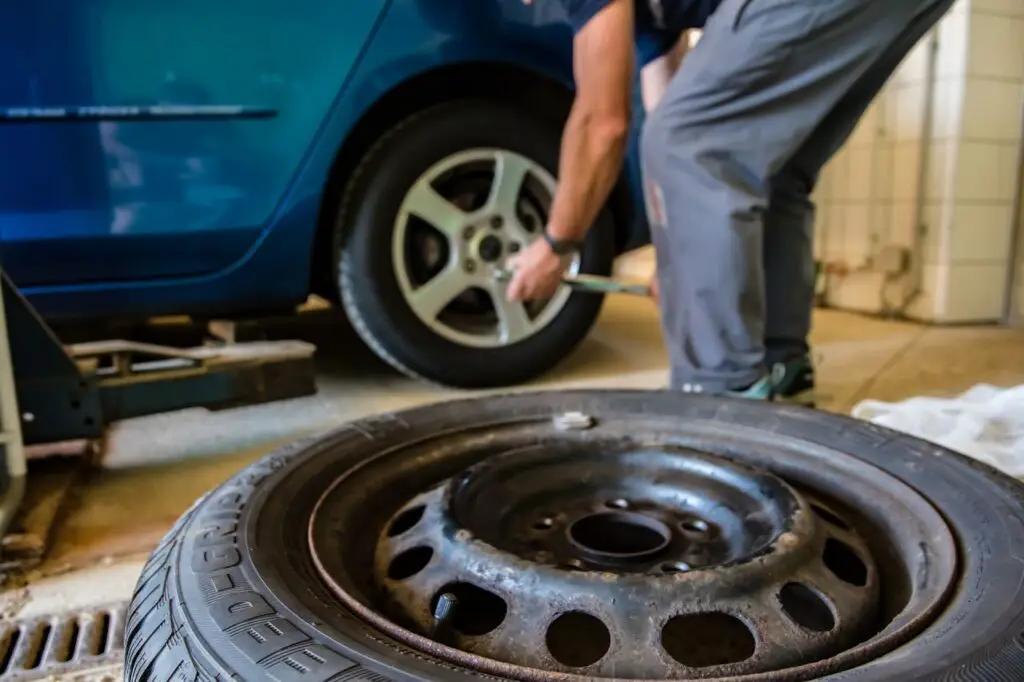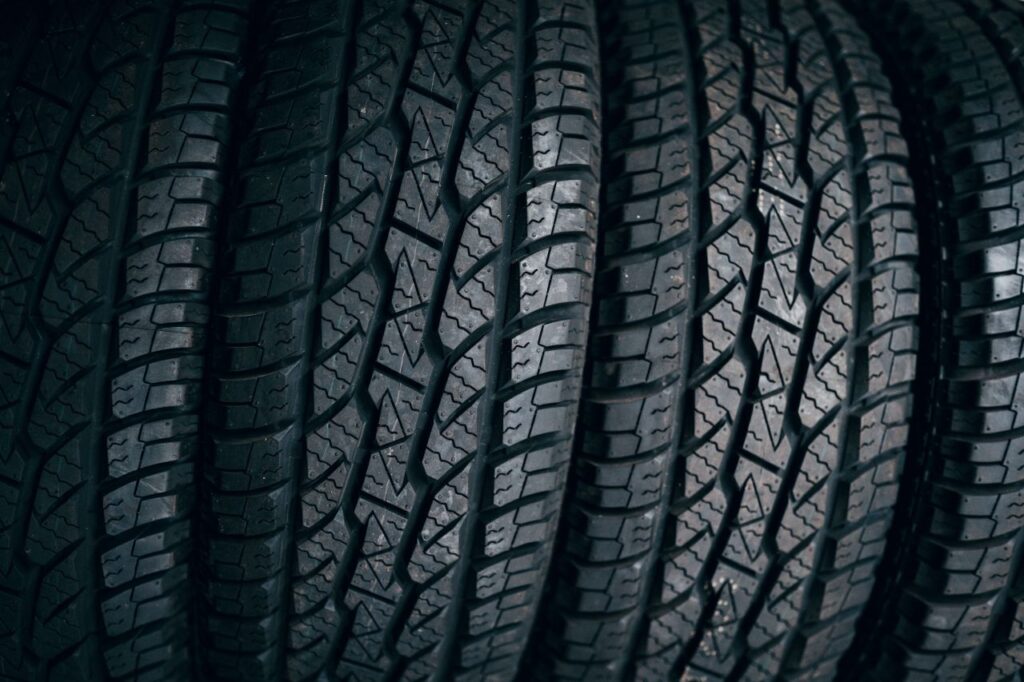A punctured tyre doesn’t always mean it’s time to buy a new one. In many cases, patching can restore the tyre to safe functionality, saving time and money.
The cost of patching a tyre can vary based on damage, repair location, and repair method.
This guide provides an overview of the average cost of patching a tyre and the factors that can influence it so that you can make the most informed decision.
Let's get straight to the point
Patching a tyre is a cost-effective solution to extend its life and avoid immediate replacement. In Australia, patching costs typically range from AUD $10 to $40, depending on damage location, repair type, and tyre type.
Basic tread repairs are cheaper (AUD $10-$20), while more complex internal patches or run-flat tyres may cost more (AUD $20-$40). DIY kits are temporarily cheaper, usually under AUD $10.
Cost can vary by repair shop location—urban centres tend to be pricier. Look for warranties and discounts from retailers to save on frequent repairs.
Choosing the right repair option based on damage and budget helps keep your tyre safe and reduces long-term maintenance costs.
Average Cost Of Tyre Patching

In Australia, the average cost to patch a tyre typically ranges between AUD $10 and $40. This price may vary depending on the repair shop, the extent of damage, and the tyre type. Here’s a breakdown of the general price range:
1. Basic Patch Repair: AUD $10 - $20
This type of repair applies to minor punctures, typically in the tyre's tread area. For basic patch repairs:
- Service Type: Minor damage patching or plugging.
- Location: Tread area only (not suitable for sidewall repairs).
- Process: Often involves a quick plug or patch applied externally.
- Cost Range: AUD $10 to $20.
These basic repairs are usually completed quickly and are suitable for small punctures that haven’t caused significant tyre damage.
2. Advanced Patch Repair: AUD $20 - $40
Advanced patch repairs are often recommended for more extensive tyre damage, particularly where the tyre may need to be removed from the rim and inspected from the inside.
- Service Type: Repair for larger punctures or damage deeper within the tyre.
- Process: The tyre is removed from the rim, inspected thoroughly, and patched on the interior.
- Cost Range: AUD $20 to $40.
These advanced repairs take longer and are more thorough, ensuring the tyre remains safe and functional for future use.
3. DIY Tyre Patch Kits: Less Than AUD $10
For those with basic repair skills, do-it-yourself (DIY) patch kits are also available:
- Cost: Typically less than AUD $10.
- Recommended Use: These kits are best for temporary repairs until a professional can assess and fix the tyre.
- Tools and Skills Needed: Basic tools and familiarity with the repair process are required.
DIY kits are convenient for emergencies but should only be used as a short-term solution.
4. Complimentary Tyre Patching
In some instances, tyre repair shops may offer complimentary patching services under certain conditions, such as:
- Purchase Benefits: If you purchased your tyres from the same shop, patching may be included at no additional cost.
- Extended Warranty: Some tyres have extended warranties that may cover patching for the tyre's life.
Complimentary patching services are generally rare and are offered as a customer benefit from select retailers.
Factors Affecting The Cost Of Tyre Patching

Several factors can impact the cost of patching a tyre. Below are some main considerations determining how much you might pay.
1. Type Of Tyre Repair Needed
- Plugging: Plugging a tyre is a quick and affordable solution, costing around $10 to $20. This method involves inserting a rubber plug outside and sealing the puncture without removing the tyre. While effective for minor damages, plugging is generally a temporary fix and may not be as durable as other options.
- Patching: Patching is a more comprehensive repair method, priced between $20 and $40. The tyre is removed from the rim, inspected for further damage, and patched from the inside to create a stronger, more lasting seal. This approach is preferred for larger punctures or those wanting a more reliable solution.
- Combination of Plug and Patch: Plugging and patching provide maximum security and provide the provider with some punctures, especially for medium-to-large holes. This method uses both techniques, offering a reinforced seal that withstands more pressure and flex. While highly effective, the added labour and materials make this option more costly than plugging or patching alone.
2. Tyre Type
- Run-Flat Tyres: Run-flat tyres are more costly to repair, typically starting at $40, as they’re designed to support limited driving after a puncture. Their reinforced structure requires specialised handling and often takes more time to repair. This added complexity makes run-flat repairs pricier than standard tyre fixes.
- Performance Tyres: High-performance tyres used on sports or high-speed vehicles often require specific repair materials, making the process more expensive. These tyres are designed for stability and speed, so repairs must meet higher standards to maintain safety. Using specialised patches and techniques raises costs beyond standard tyre repair rates.
- Standard Tyres: Standard tyres are the most common and least expensive to repair, generally between $10 and $40. Since they don’t require special techniques or materials, repairs are simpler and cheaper than with performance or run-flat tyres. These repairs meet average road-use demands and are suitable for most vehicles.
3. Location Of Damage
- Tread Area: Repairs in the central tread area are the easiest and cheapest, as flex and strain affect this part of the tyre less. This area provides a stable surface for patching or plugging, keeping costs lower. Typically, repairs to the tread fall within standard price ranges.
- Shoulder and Sidewall Areas: The shoulder and sidewall are high-stress tyre areas and are challenging to repair safely. Damage here often requires replacement rather than patching, as repairs might not hold up under flexing. Because of the structural risks, most shops recommend tyre replacement for sidewall and shoulder punctures.
- Repair Complexity: Patches on the sidewall are unreliable since this area’s structural flex can weaken the patch over time. Even if repairs are attempted, they may not be guaranteed for safety or durability. Due to these risks, the location of damage heavily influences repair costs.
4. Repair Shop Rates And Location
- Urban Centres: Tyre repairs in urban centres are typically more expensive, with prices around $20-$40, as shops have higher operating costs. High demand and overhead expenses contribute to these higher prices. Repair services in large cities like Sydney or Melbourne follow this trend.
- Regional or Remote Areas: In remote or rural areas, tyre repair costs can vary due to limited service availability and competition. Some regional shops might charge more, especially if parts and labour are harder to source. However, other local workshops in small towns may offer reduced prices to attract customers.
- Local Workshops: Smaller, independent workshops often price competitively, especially in less populated areas. To remain competitive, these shops offer discounts or lower service charges than larger city-based repair centres. Pricing flexibility in these shops can benefit budget-conscious drivers.
5. Warranties And Discounts
- Warranty Repairs: Some tyre retailers offer free or discounted repairs as part of the tyre purchase warranty, typically covering punctures for a specified period. This benefit can save drivers on unexpected repairs, especially within the first year of purchase. Warranty coverage varies by shop, so checking terms is important.
- Discounted Repairs: Regular customers or loyalty program members may receive discounts on tyre repairs, lowering maintenance costs over time. These programs often include discounted patching and plugging services for members. Shops may also offer seasonal discounts or promotions to attract return customers.
- Savings Potential: Warranty and discount benefits can significantly reduce tyre maintenance costs, especially for drivers facing frequent punctures. Many shops promote these savings to retain customer loyalty, which can be especially useful in areas with rougher roads. These perks make it worthwhile to buy tyres from shops offering strong warranty and discount policies.
Conclusion
Patching a tyre is a cost-effective and efficient solution to extend its life without needing a new purchase.
Understanding the types of repairs—from basic plug-and-patch to advanced internal repairs—can help you choose the right option based on your tyre’s condition and repair needs.
The average cost of a tyre patch ranges from AUD $10 to $40, depending on factors such as damage location, repair type, and tyre type.
Knowing these variables can help you make an informed decision and save on maintenance costs. While urban repairs might be pricier due to higher operational costs, discounts, warranties, and loyalty programs offer opportunities to cut expenses.
Addressing tyre punctures promptly and professionally ensures safety, extends tyre lifespan, and helps keep repair costs manageable.
FAQs About Tire
A slow leak from a nail or screw that's gotten lodged in your tyre is a good candidate for repair. Tyre repairs are relatively inexpensive and can even be free if you have a tire warranty. If done right, your repaired tyre will be safe to drive on for its original full life.
I personally don't feel that it is the safest or most effective procedure for repairing a leaking or damaged tyre. Yes, plugging a tyre is cheaper than patching by about 5 or 6 dollars, and that is likely the main reason many people request plugs.
When travelling for a long time, tyres will appear damaged, and the most common problem is tyre puncture. In this case, tyre patching is an effective method that helps save both time and money. So, how long does a patched tyre last? Patch tyres typically have an average lifespan of 7-10 years.
A patched tyre repair is better and safer than a flat tyre. There are no safety concerns with a well-patched tyre, and it is actually the best way to handle flat tyres. It is safe to drive on a patched tyre regardless of how rugged or rocky the road gets.
It has a rubber plug that is built into it, so once this is pulled through, the metal piece comes off, the inside is a patch, it seals the inside, it seals the outside, it's considered a permanent repair.

